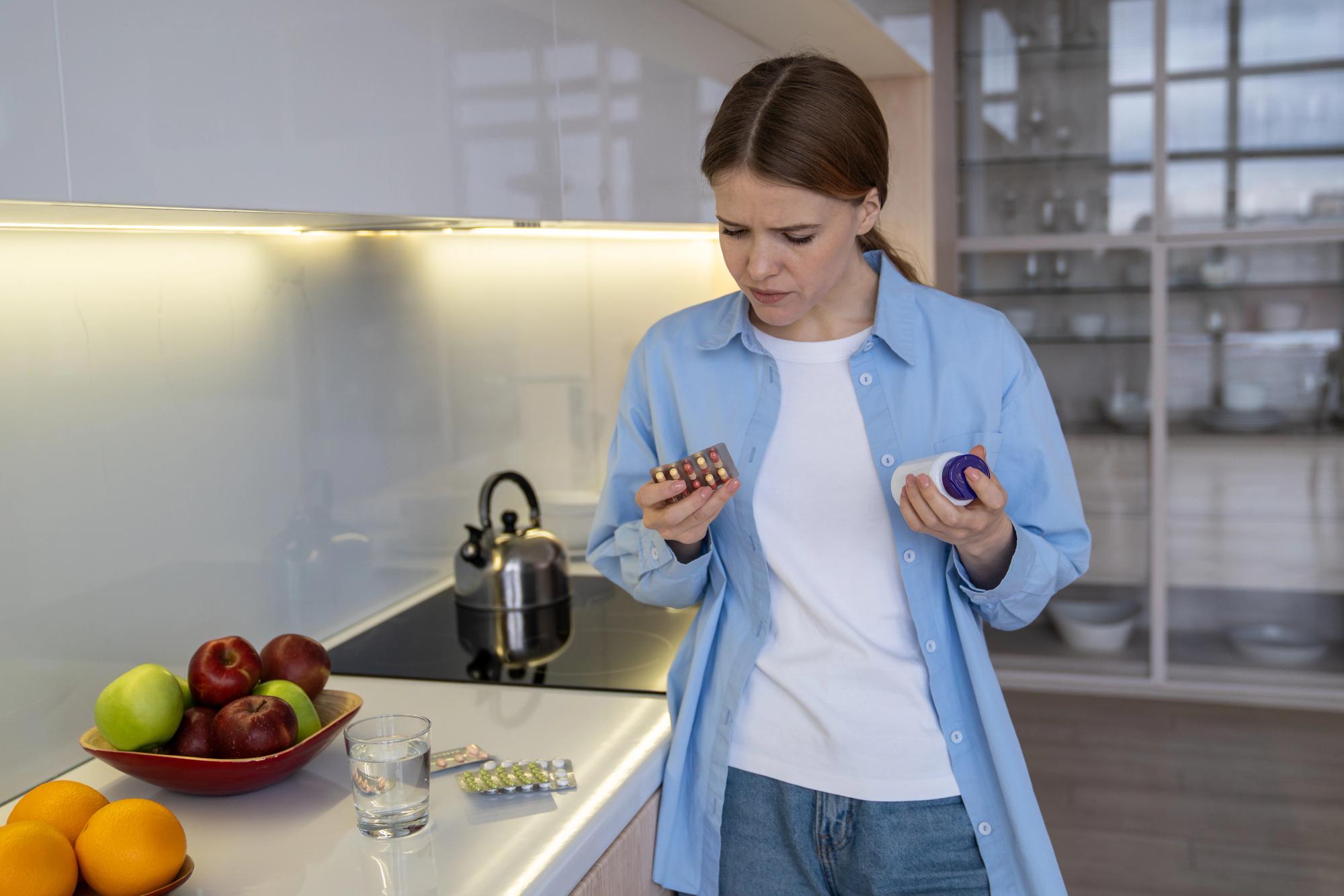Opioid Misuse and Addiction



As a Clinical Research Specialist, writer, and person with lived experience in mental health recovery, Grace blends clinical research with honest storytelling to inspire healing and hope. In her free time, she enjoys writing books for young adults, an age when she needed stories the most.

Dr. Mala, is the Chief Clinical Officer at Recovery.com, where she develops impartial and informative resources for people seeking addiction and mental health treatment.




As a Clinical Research Specialist, writer, and person with lived experience in mental health recovery, Grace blends clinical research with honest storytelling to inspire healing and hope. In her free time, she enjoys writing books for young adults, an age when she needed stories the most.

Dr. Mala, is the Chief Clinical Officer at Recovery.com, where she develops impartial and informative resources for people seeking addiction and mental health treatment.
Opioids have many forms and uses, from essential painkillers to illicit pseudo-prescriptions with hidden risks and dangers. In any form, prescribed or illicit, they’re highly addictive.
In this article, opioid “misuse” will describe the act of taking opioids, prescribed or not, for purposes beyond their intent. This type of use can quickly spiral into addiction, but many treatment programs offer pathways to recovery.
What Are Opioids?
Opioids are a type of drug derived from the opium poppy plant1, but can also be lab-created without the opium base. When opioids bind to opioid receptors in the brain, they block pain signals1 and produce a sense of euphoria. This aspect in particular can spur misuse and, eventually, addiction.
Opioid Types and Their Uses
Opioids come in many forms, carefully modified for medicinal uses or haphazardly assembled in clandestine labs for illicit purposes. Here are some of the most common types and their uses.
Pain Relievers
Pain-relieving opioids have been developed specifically for intense pain. Doctors often prescribe them after surgeries or for painful, chronic conditions like cancer. When used as prescribed (usually a small amount over a specific time frame), prescription opioids are less likely to lead to addiction.
Prescription opioids2 include:
- Oxycodone
- Hydrocodone
- Morphine
- Oxymorphone
- Fentanyl
- Codeine
Illegal Types
Some opioids are never prescribed due to their potency and potential for addiction. These opioids might be naturally derived or synthetic (man-made). They’re classified as illegal, and having them can result in jail time. Examples include
- Heroin, which comes directly from the opium poppy
- Fentanyl and carfentanil (when procured and taken without a prescription)
Risk Factors for Opioid Misuse
Although opioids can be highly addictive, not everyone who takes an opioid, prescribed or otherwise, will develop an addiction. Certain risk factors can make addiction more likely, like your genetics, environmental influences, and mental health conditions.
Genetics
Your genes can increase the chance of opioid addiction3. They don’t cause addiction, but slight variations and epigenetics (changes in how your body reads gene sequences) can make you more prone to opioid addiction. For example, variations in your mu-opioid receptors can alter how your reward system works—an integral part of developing an addiction.
Environmental Influences
Growing up in an environment that normalizes substance use can make addiction more likely. Stressful environments can, too, as substances can serve as a coping mechanism. People may also use substances to connect and fit in with peers4.
For example, a child who grows up with family members who drink heavily may get introduced to alcohol early on and view drinking as a way to connect with their loved ones. Someone who grows up in high-stress environments, like poverty or often witnessing domestic violence, may also turn to substance use as a way to cope with the ongoing strain. These types of environments can lead to the initiation of use, which can snowball into addiction.
Mental Health Conditions
Having a mental health condition like depression, anxiety, or post-traumatic stress disorder (PTSD) can make you more susceptible to addiction5. Someone may use substances to self-medicate6 the symptoms of their condition. For example, someone with anxiety may notice their prescription opioids gave them a sense of calm and well-being that made social interactions easier. Or, a stressed executive may find they can get through the day easier if they take heroin before work.
Regular use for these reasons can bloom into an addiction.
Signs of Opioid Use
If you suspect a friend or a loved one has started using opioids not as prescribed or procuring illicit opioids, you can look for key signs of opioid use7 and voice your concerns to them. This can start the process of getting treatment if and when they’re willing.
Physical Signs
- Seeming tired often, “out of it”
- Small pupils
- Disheveled appearance
- Track marks on their arms or legs and/or unseasonal clothes to hide them
- Sudden, unexplained loss of pain that previously impaired their functioning
Behavioral Signs
- Avoiding family and friends without adequate explanation
- Acting secretive about their belongings and activities
- A marked change in their attitude or personality
- They may lose their job or academic standing due to poor performance
Symptoms of Opioid Addiction
The symptoms of an opioid addiction may look similar to the signs of initial use. Their key differentiator is how greatly they affect someone’s day-to-day life. An addiction will rewrite someone’s priorities and motives, while regular use often doesn’t.
Job Loss and/or Financial Struggles
Fixating on using opioids can lead to neglecting work responsibilities, which may cause job loss and ensuing financial struggles. They may lose their home or need to sell personal belongings, like their car and jewelry, to keep paying for opioids. They might even resort to theft.
Health Complications
An opioid addiction can cause various health complications8, including weight loss, infection, and blood-borne diseases from unclean needles. You may notice they seem haggard and generally unwell.
People who regularly take opioids are also more likely to fall, get sick more often, and actually become more sensitive to pain.
Relationship Struggles
Someone with an opioid addiction may neglect personal relationships and friendships to either hide their use or spend more time on getting, taking, and coming down from opioids. Their relationships may fade and crumble as a result.
Treatments for Opioid Use
Opioid addiction has many paths to recovery.
Detox
Opioid treatment often starts with detox, which safely removes opioids from the body and allows it to return to homeostasis. Medications like buprenorphine9 and methadone10 can help people detox from opioids more comfortably and lessen cravings. Some people stay on these medications to enhance their recovery since they reduce the effects opioids have and make them pointless to take.
Rehab
Many residential rehabs offer detox and therapeutic care over the course of 28+ days. Rehabs aim to treat both the medical and emotional effects of opioid addiction, helping people address root issues and build practical relapse prevention skills.
A typical day in rehab includes 1:1 and group therapies, plus group activities and likely a peer step meeting or two. Depending on its location, some rehabs may offer daily activities or weekly outings, like hiking.
Outpatient
Outpatient programs offer intensive care with greater flexibility. You’ll attend therapy during the day but go home at night and have time for personal responsibilities. Many clinics also offer medication-assisted treatment for opioid addiction recovery.
For example, you may go to outpatient treatment after work from 5-7 p.m. You’ll likely attend multiple group therapy sessions and focus on building and strengthening relapse prevention skills. A more intensive outpatient program is day treatment, which typically runs for 5-8 hours a day, 5-7 days a week. Intensive outpatient programs (IOPs) often include 3-5 days of weekly treatment for 2-3 hours daily.
Continuing Support
Treatment for opioid addiction doesn’t end once your programs do—it can continue for years in aftercare and peer support programs. For example, you could attend regular 12-Step meetings like Narcotics Anonymous (NA) or secular SMART Recovery meetings. These keep you connected to others in recovery and provide accountability.
Ongoing therapy can support your healing, too. You can meet with a therapist on a regular cadence to discuss current events and keep working through issues identified in addiction treatment.
Find Opioid Rehabs
Opioid rehabs exist worldwide. They offer various approaches and levels of care, meaning you can find a rehab best suited to your needs and preferences.
On Recovery.com, you can search for opioid rehabs by location, insurance type, level of care, and more. You can also see reviews, photos, pricing information, and read detailed descriptions of each center.
-
Https://Www.Cancer.Gov/Publications/Dictionaries/Cancer-Terms/Def/Opioid. 2 Feb. 2011, https://www.cancer.gov/publications/dictionaries/cancer-terms/def/opioid.
-
Abuse, National Institute on Drug. Prescription Opioids DrugFacts | National Institute on Drug Abuse (NIDA). 1 June 2021, https://nida.nih.gov/publications/drugfacts/prescription-opioids.
-
Genes and Addiction. https://learn.genetics.utah.edu/content/addiction/genes/. Accessed 4 Oct. 2024.
-
Loke, Alice Yuen, and Yim-wah Mak. “Family Process and Peer Influences on Substance Use by Adolescents.” International Journal of Environmental Research and Public Health, vol. 10, no. 9, Sept. 2013, pp. 3868–85. PubMed Central, https://doi.org/10.3390/ijerph10093868.
-
Abuse, National Institute on Drug. Co-Occurring Disorders and Health Conditions | National Institute on Drug Abuse (NIDA). 19 Apr. 2024,
-
Turner, Sarah, et al. “Self‐medication with Alcohol or Drugs for Mood and Anxiety Disorders: A Narrative Review of the Epidemiological Literature.” Depression and Anxiety, vol. 35, no. 9, Sept. 2018, pp. 851–60. PubMed Central, https://doi.org/10.1002/da.22771.https://nida.nih.gov/research-topics/co-occurring-disorders-health-conditions.
-
Opioids: Recognizing the Signs. https://www.health.ny.gov/community/opioid_epidemic/signs.htm. Accessed 4 Oct. 2024.
-
Long Term Harms of Opioids | Faculty of Pain Medicine. https://fpm.ac.uk/opioids-aware-clinical-use-opioids/long-term-harms-opioids. Accessed 10 Oct. 2024.
-
Kumar, Rachna, et al. “Buprenorphine.” StatPearls, StatPearls Publishing, 2024. PubMed, http://www.ncbi.nlm.nih.gov/books/NBK459126/.
-
“Methadone Maintenance Treatment.” Clinical Guidelines for Withdrawal Management and Treatment of Drug Dependence in Closed Settings, World Health Organization, 2009. www.ncbi.nlm.nih.gov, https://www.ncbi.nlm.nih.gov/books/NBK310658/
Our Promise
How Is Recovery.com Different?
We believe everyone deserves access to accurate, unbiased information about mental health and recovery. That’s why we have a comprehensive set of treatment providers and don't charge for inclusion. Any center that meets our criteria can list for free. We do not and have never accepted fees for referring someone to a particular center. Providers who advertise with us must be verified by our Research Team and we clearly mark their status as advertisers.
Our goal is to help you choose the best path for your recovery. That begins with information you can trust.









